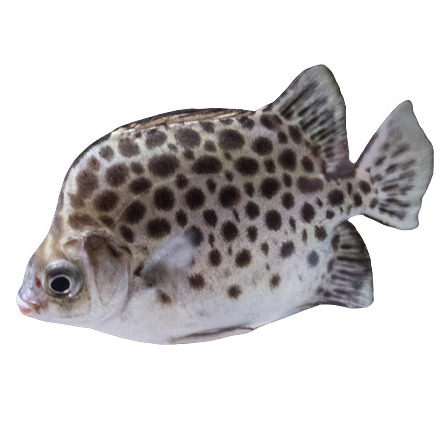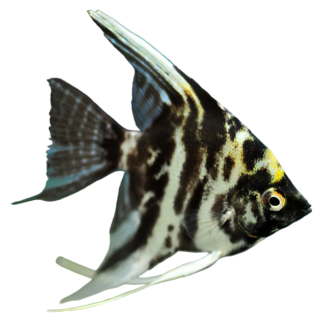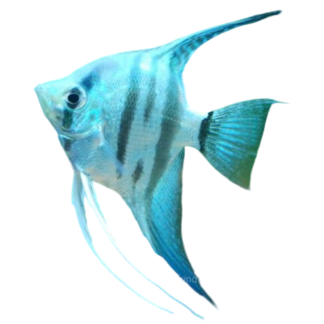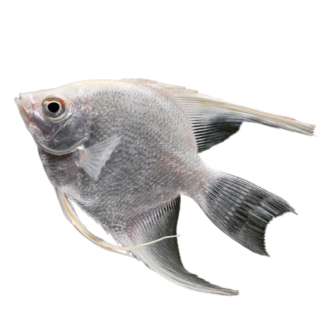Description
- The scat fish, also known as scats, belong to the family Scatophagidae. Here’s a detailed description:
Scientific Classification
- Family: Scatophagidae
- Genera: Scatophagus (most common) and Selenotoca
- Common Species:
- Spotted Scat (Scatophagus argus)
- Silver Scat (Selenotoca multifasciata)
Physical Characteristics
- Shape: Deep-bodied, laterally compressed (similar to angelfish).
- Size: Typically 6–12 inches (15–30 cm) in captivity; can grow larger in the wild.
- Coloration:
- Spotted Scat: Greenish or brownish with dark spots (juveniles have more vivid colors).
- Silver Scat: Silvery with dark vertical bands.
- Fins: Dorsal fin has sharp spines (can be mildly venomous).
Habitat & Distribution
- Found in brackish waters (estuaries, mangroves, coastal lagoons) but can adapt to freshwater or full marine conditions.
- Native to the Indo-Pacific region (India, Southeast Asia, Australia).
Behavior & Diet
- Omnivorous: Feeds on algae, small invertebrates, detritus, and even waste (name Scatophagus means “dung-eater”).
- Social: Generally peaceful but may nip at slow-moving fish.
- Hardy: Tolerates varying salinity levels.
Aquarium Care
- Tank Size: Minimum 75 gallons for adults (they grow large).
- Water Conditions:
- Salinity: Prefer brackish (SG 1.005–1.015) but adapt to freshwater.
- pH: 7.5–8.5
- Temperature: 72–82°F (22–28°C)
- Diet: Varied—algae wafers, shrimp, vegetables, and high-quality pellets




Reviews
There are no reviews yet.